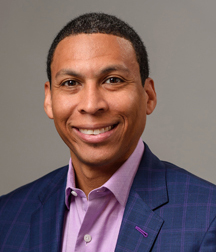
The role of emergency medicine is not necessarily to be in a brick-and-mortar emergency department 24-7. … That’s part of our future. That’s certainly not all of our future. —Jesse Pines, MD, MBA, FACEP
Explore This Issue
ACEP Now: Vol 40 – No 10 – October 2021
Beyond Brick and Mortar
Dr. Pines, ever the futurist, explained that “the role of emergency medicine is not necessarily to be in a brick-and-mortar emergency department 24-7. … That’s part of our future. That’s certainly not all of our future.” Other opportunities such as telemedicine, fueled by the need to adapt to COVID-19’s restrictions on in-person contact between physicians and patients, and freestanding emergency medicine, recently pioneered by waves of emergency physician entrepreneurs, promise new practice models for emergency physicians. However, not all are enthusiastic about these approaches. Emergency physician RJ Sontag, MD, during the recent ACEP Leadership & Advocacy Conference, expressed his displeasure as a new graduate to be forced to practice virtual medicine.
We want to be a place where the best minds, the brightest minds, the most energetic medical students are choosing to be in our profession. —Jay Mullen III, MD, FACEP
Our roundtable experts echoed this sentiment. “Sitting in front of a computer screen isn’t something I enjoy doing all day,” said Dr. Koskenoja. Alluding to the sounds, sights, and smells of the emergency department, she presented a contrasting explanation. “We didn’t become radiologists for a reason.” Not every emergency physician will want to do telemedicine; however, some—people at high risk for COVID or with other personal reasons—enjoyed the flexibility that it offered. Dr. Mullen thinks telemedicine offers an excellent opportunity for emergency departments to expand their footprints while keeping patients—for example, nursing home patients—out of the emergency department and in a place that is best suited to treat them. “This could be an opportunity for emergency physicians to help bring the care to the bedside, at least in a virtual way, to keep the patients where they’re going to be the healthiest,” he said.
Our Future
According to Dr. Mullen, “we want to be a place where the best minds, the brightest minds, the most energetic medical students are choosing to be in our profession.” Regardless of whether the projections from the workforce report pan out a decade from now, provided that we maintain the rigorous nature of our training programs, I am confident that emergency medicine will continue to draw the best and brightest.
Pages: 1 2 3 4 5 | Single Page






One Response to “Emergency Physicians Explore the Future of the Emergency Medicine Workforce”
October 27, 2021
Concerned ED DocWhile I appreciate the time and effort some of these doctors have put into conversing with the editor, I feel like they are quite out of touch from our major concerns.
NPs and PAs are in not “advanced practice.” They’re mid-level practice at best. Yes it would be great to use them in a team setting but in reality in most EDs around this country the volume and staffing doesnt permit the ED physician from in-time reviewing what they see and do. This leads to the façade of a team dynamic and physician led ED while in reality it just puts our licenses at risk.
The newer EM grads, especially those in the past 1-5 years of residency (not to mention those currently in residency) didn’t get into emergency medicine to do telemedicine. We became EM physicians because we appreciated the complexity, randomness, and high pace (at times) of emergency medicine. We wanted to do procedures while also being able to take care whatever came through the doors.
Yes, I agree we need to recruit and make wanting to work in a rural environment a priority but thats not going to solve the 9,000 additional grad problem in 9 years.
Do something to stop the proliferation of profit driven (ex: HCA) EM residency programs. Stop promoting the usage of NPs and PAs in place of physicians. Create standards that require staffing requirements and in-time supervision of patients with mid-levels. Promote transparency in billing practices in our names. Stop the “full practice authority” that has proliferated the NPs and created a false sense of equivalency with physicians.